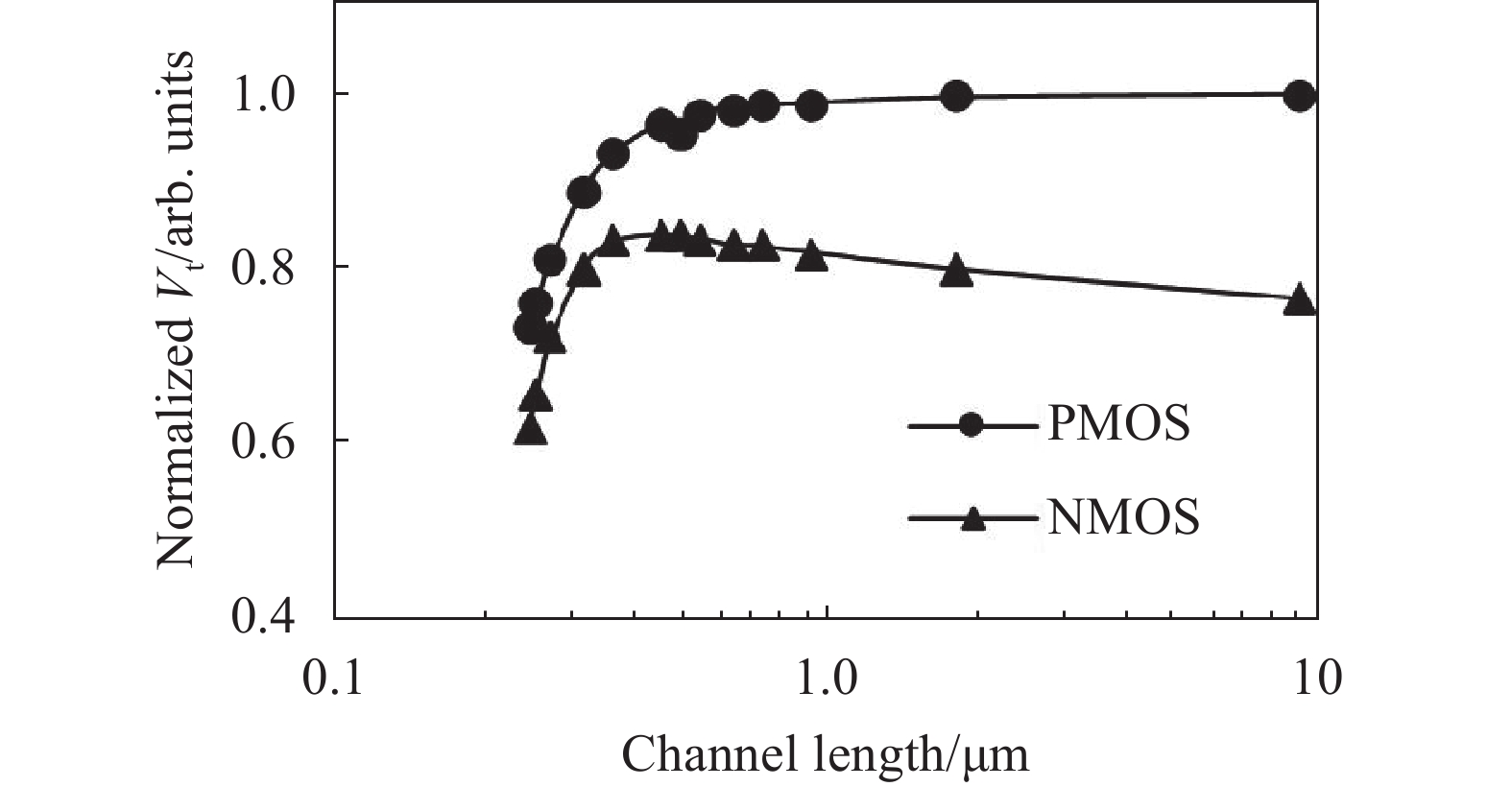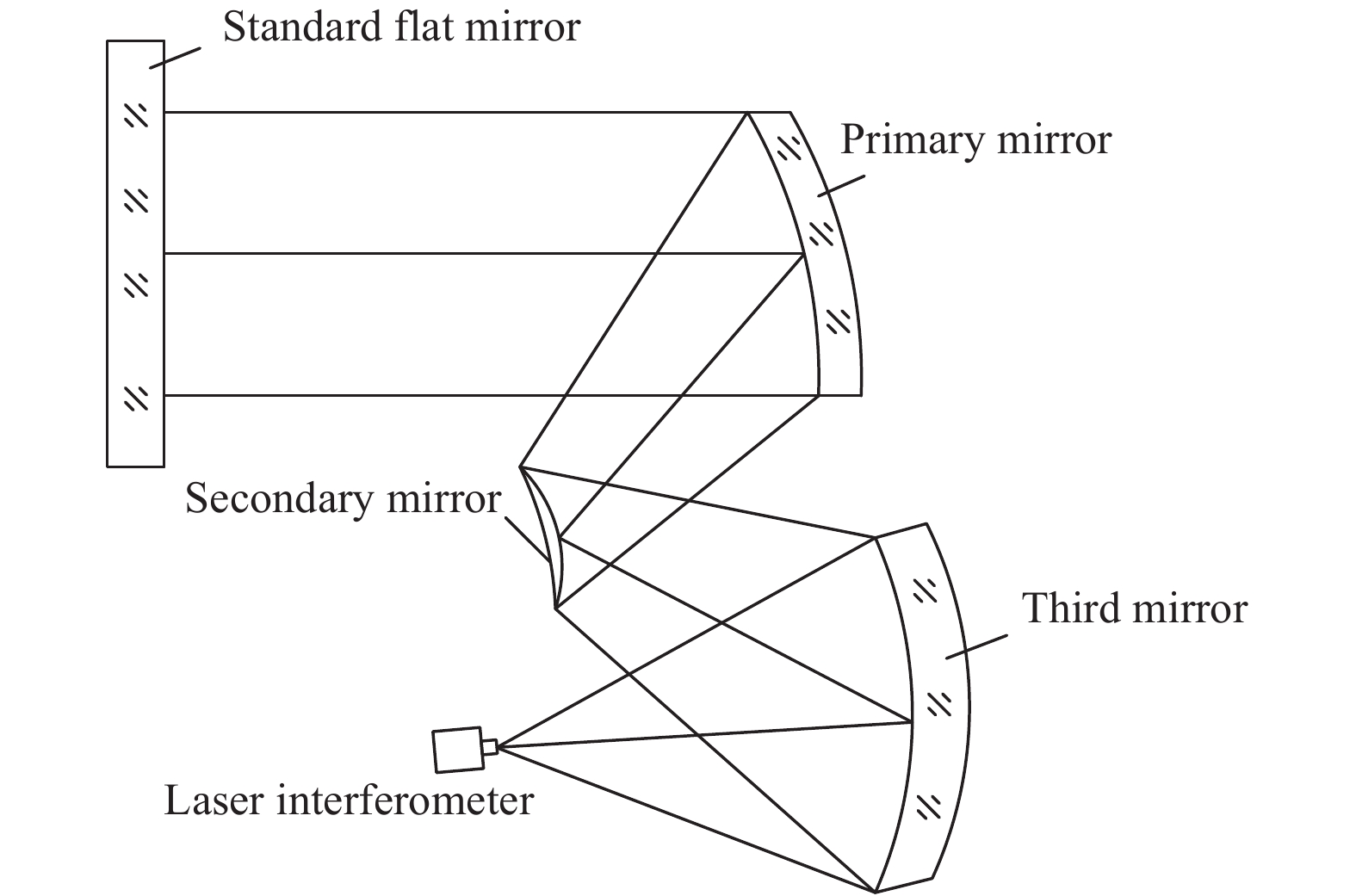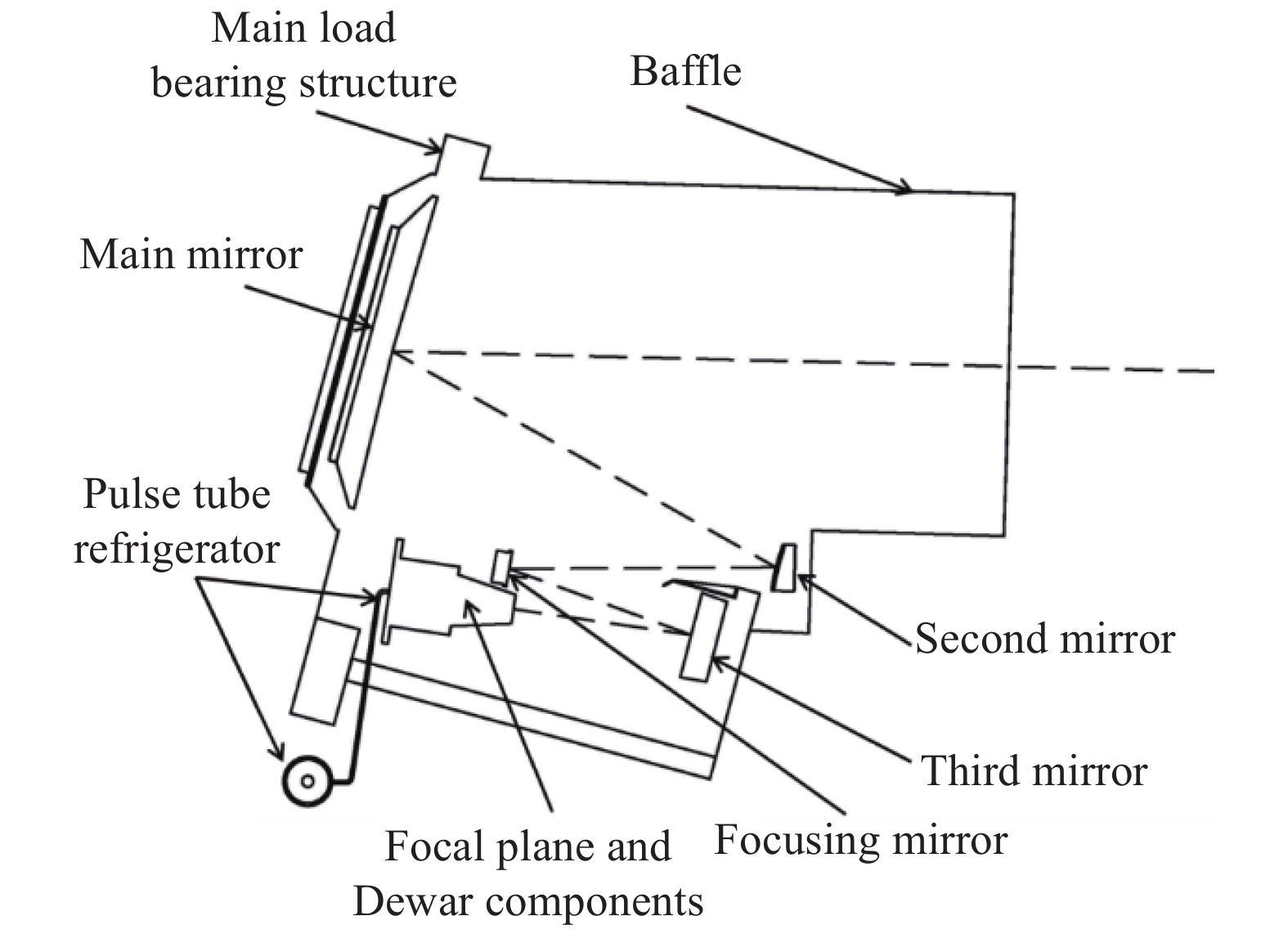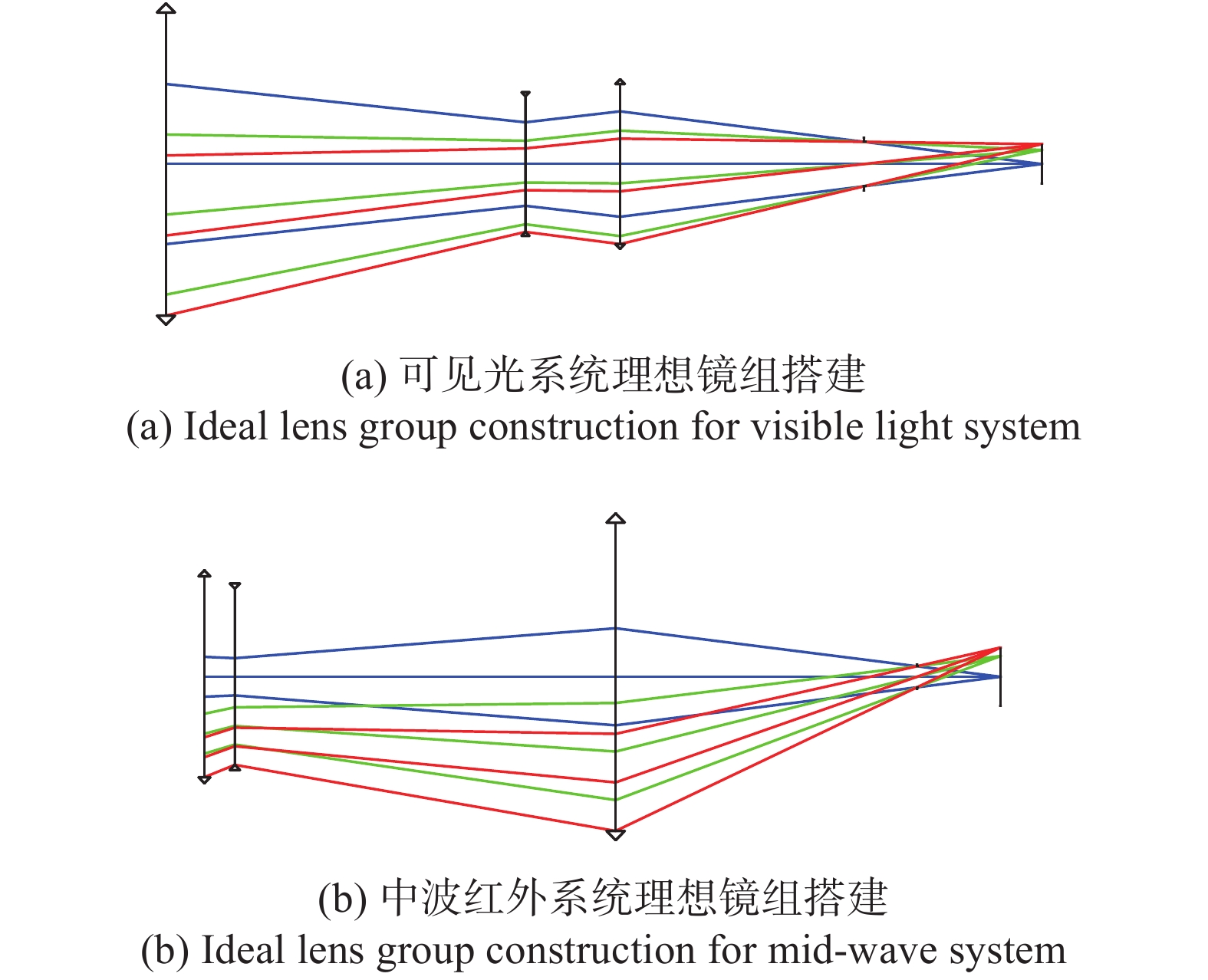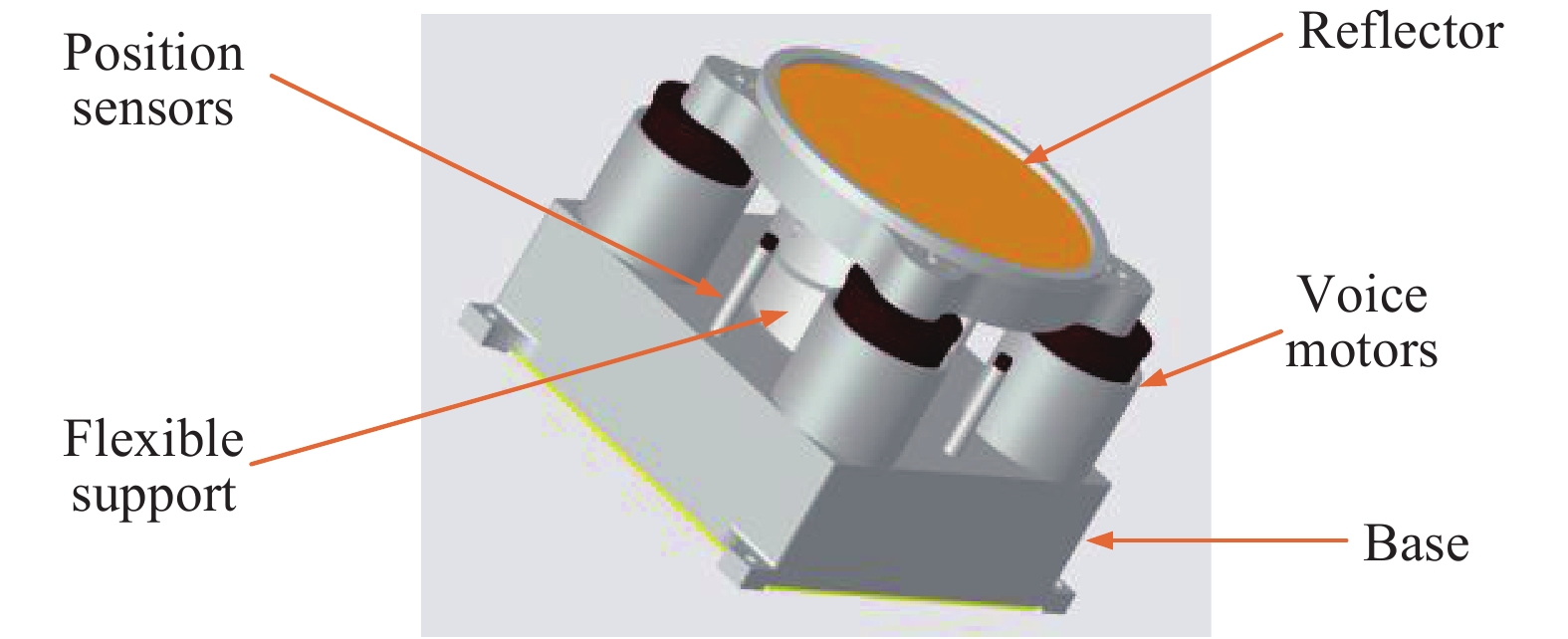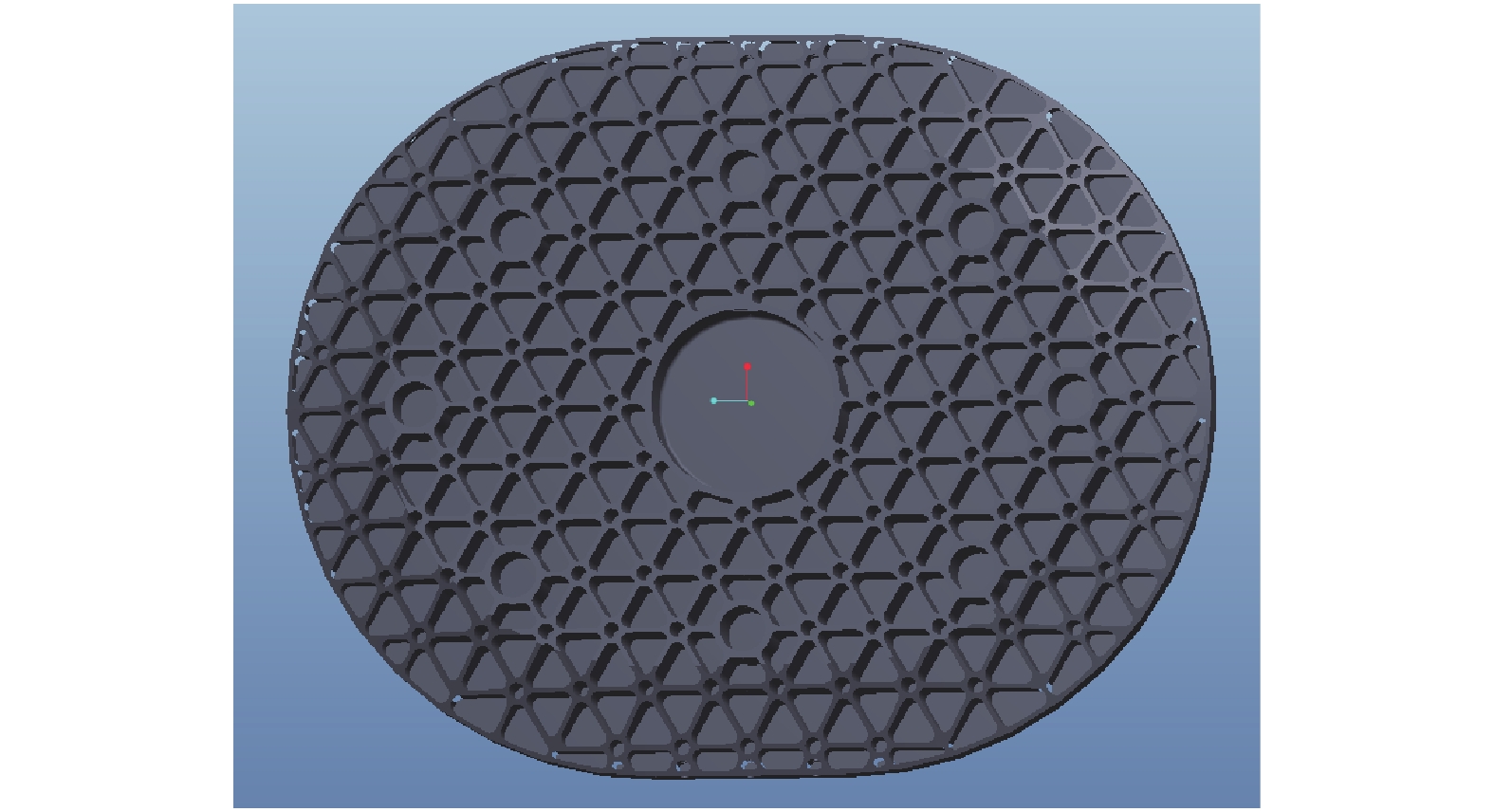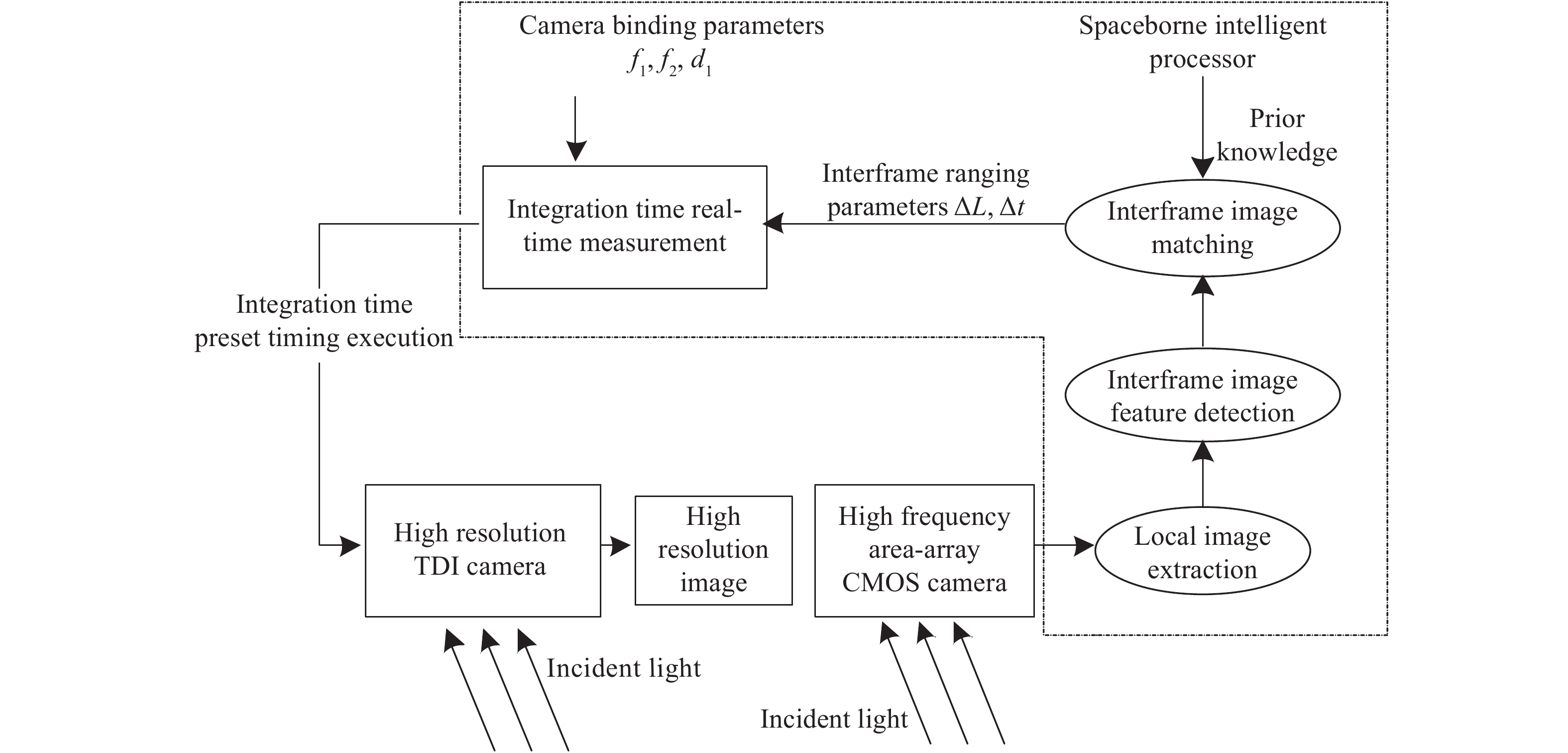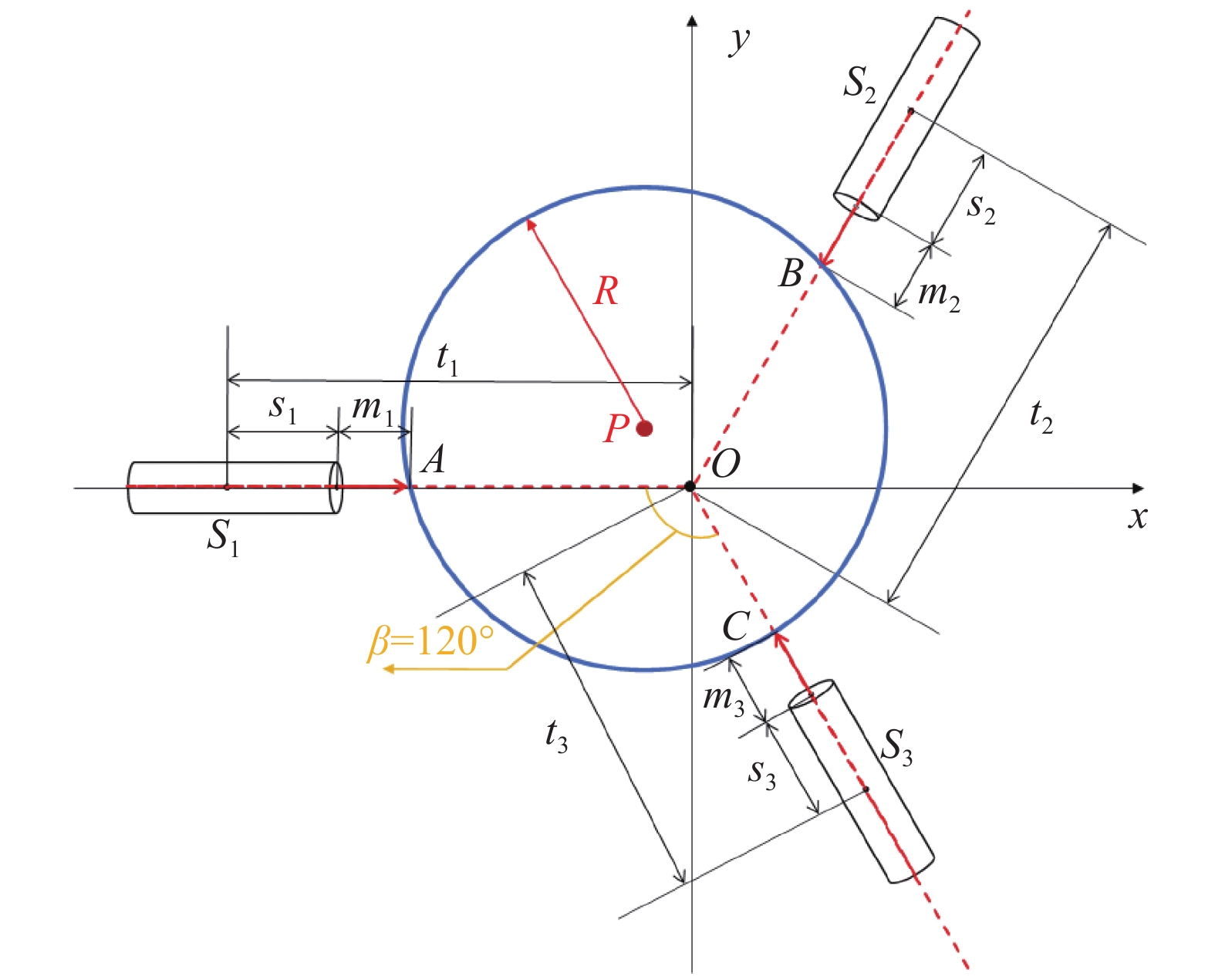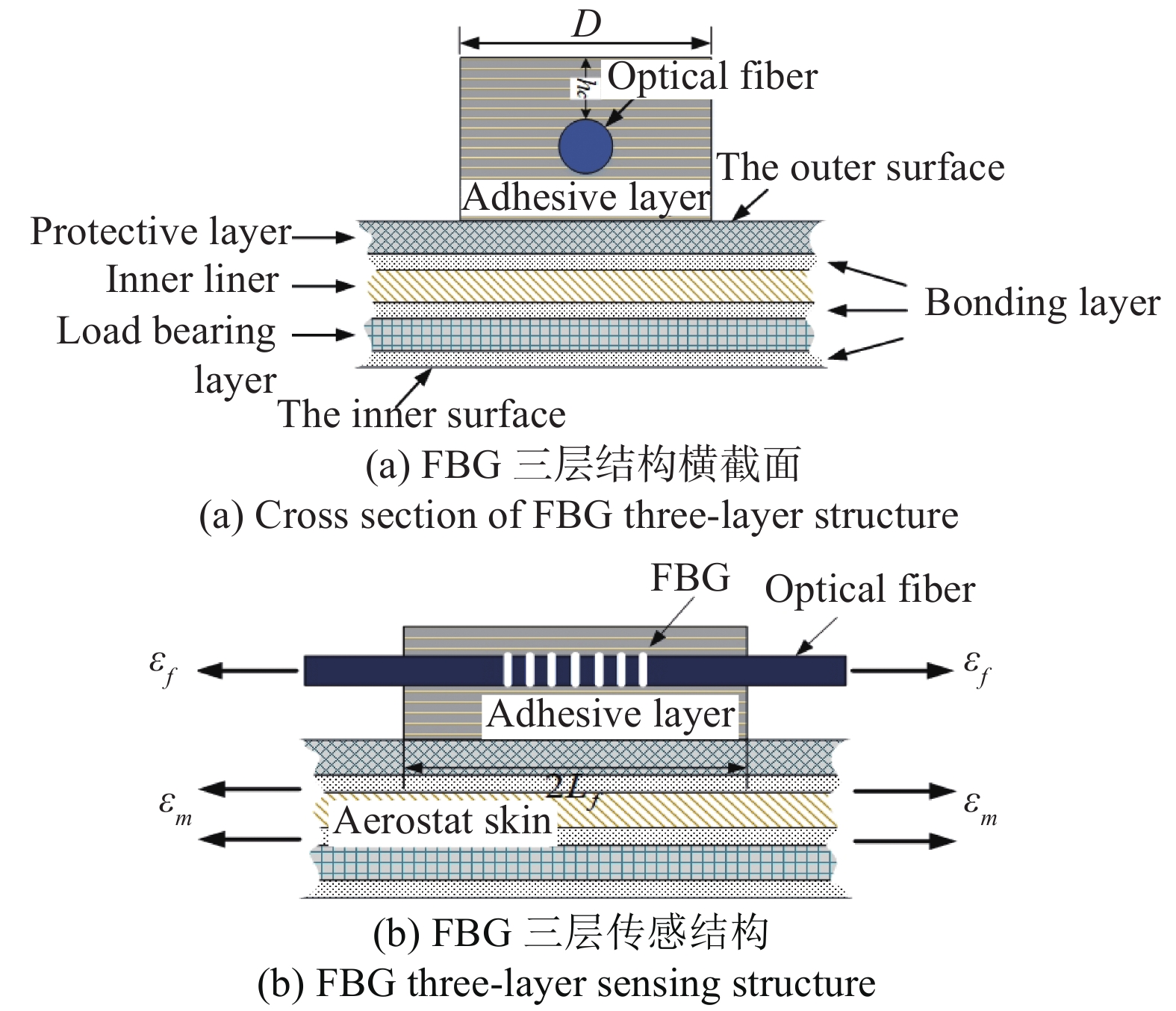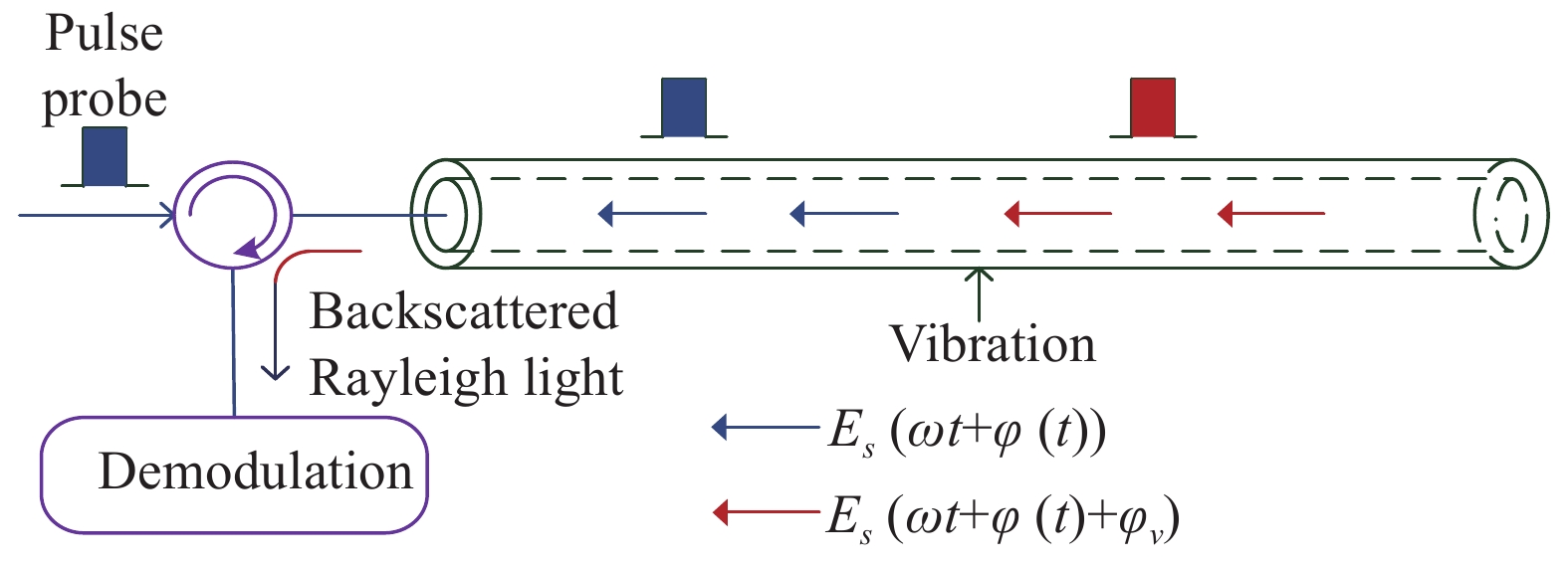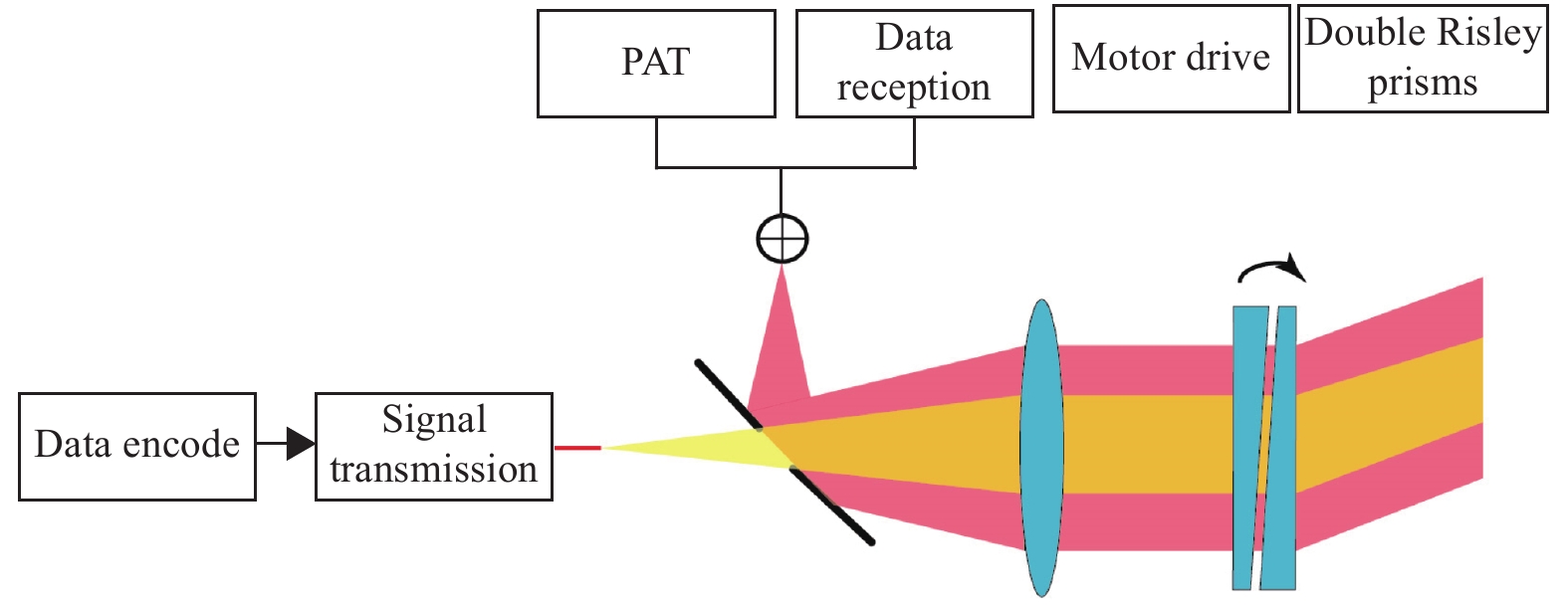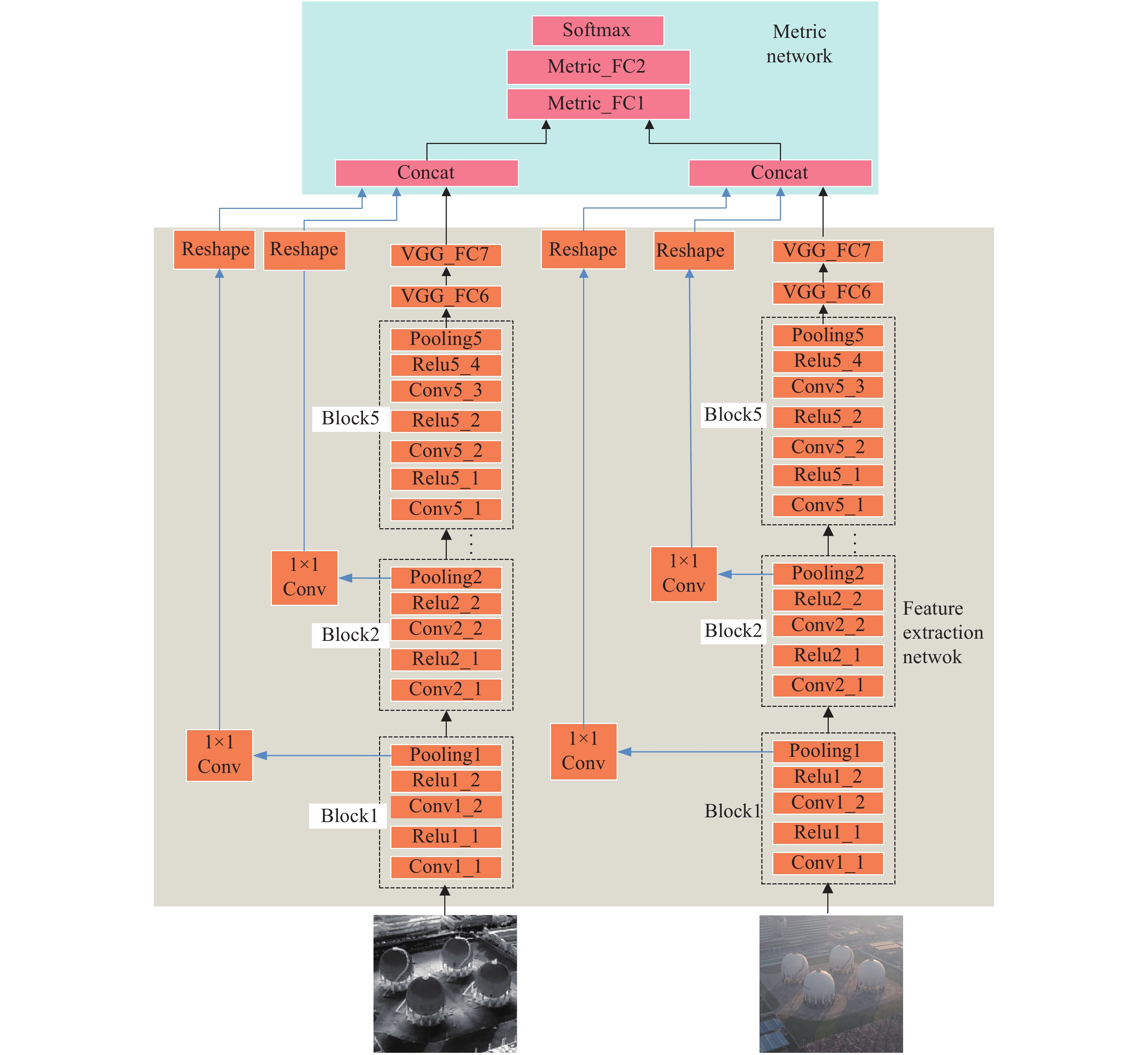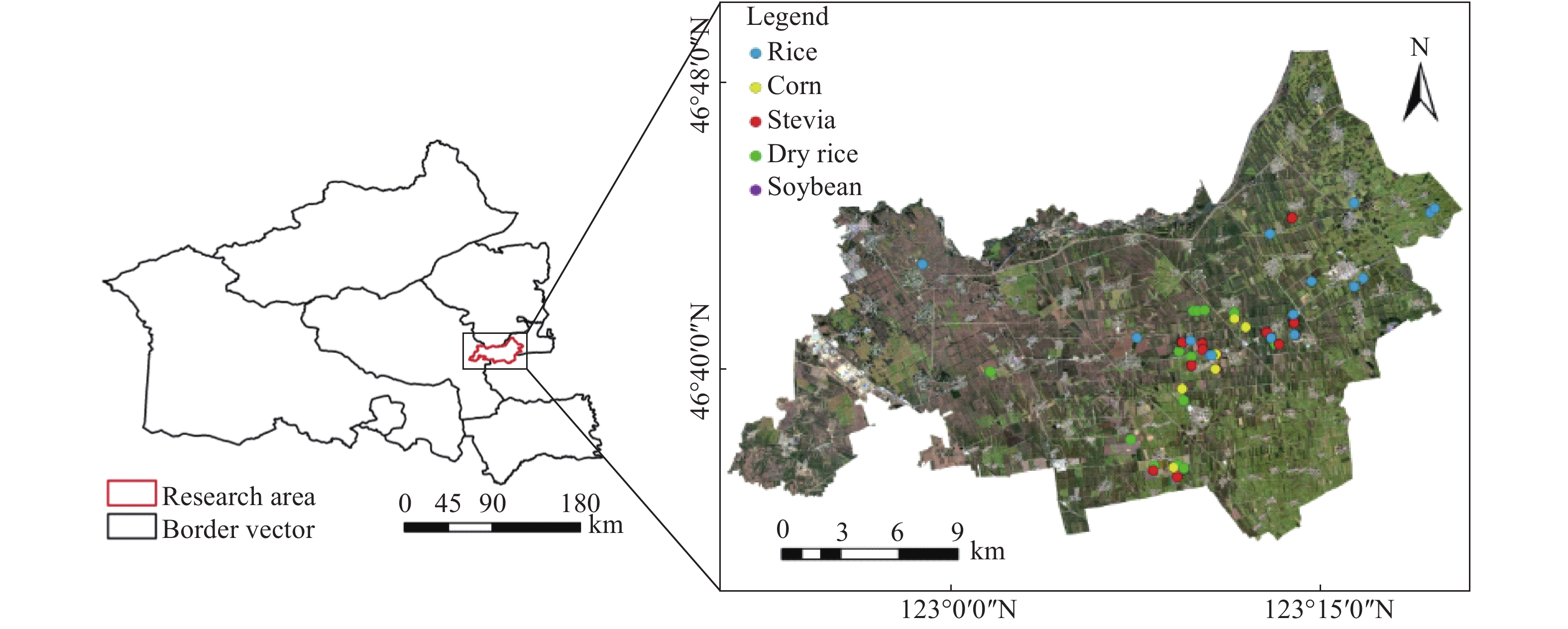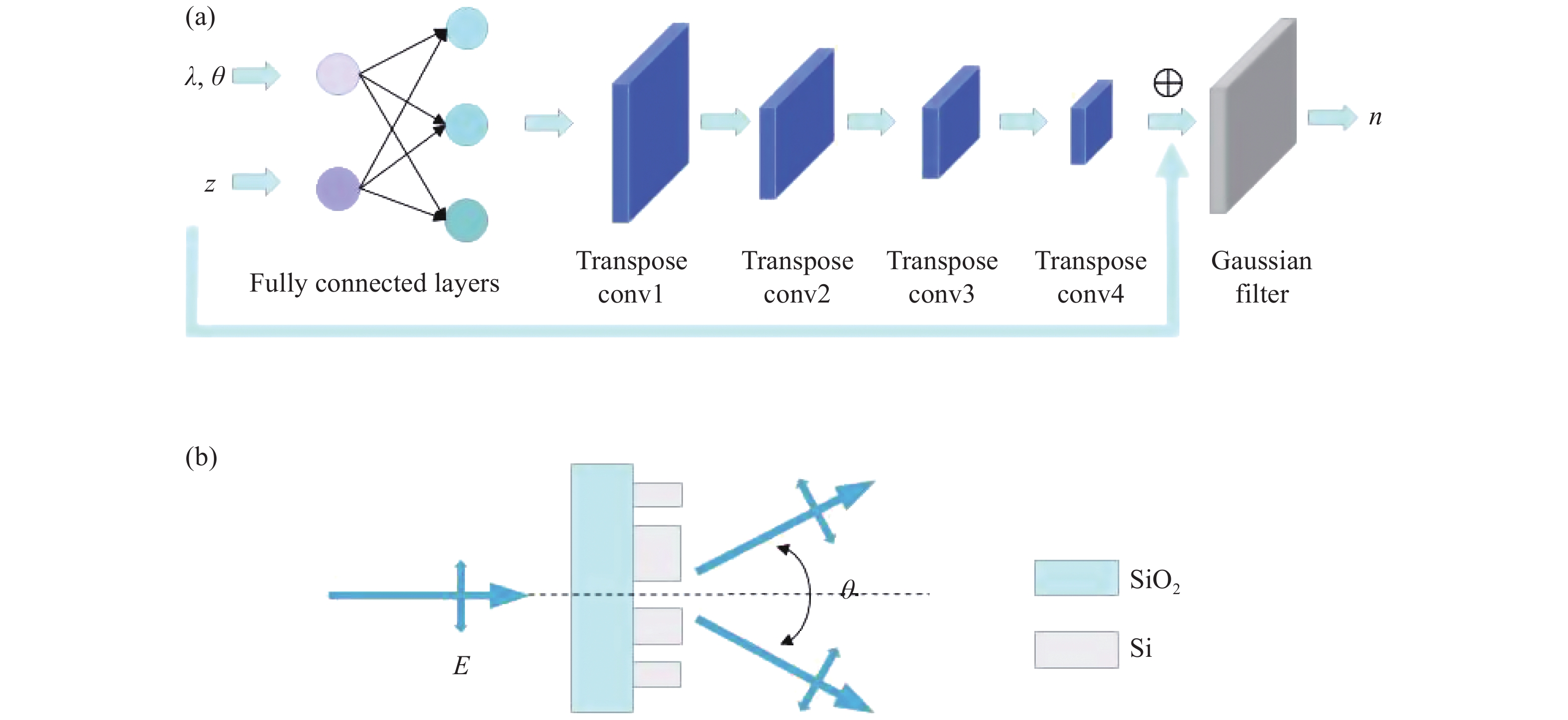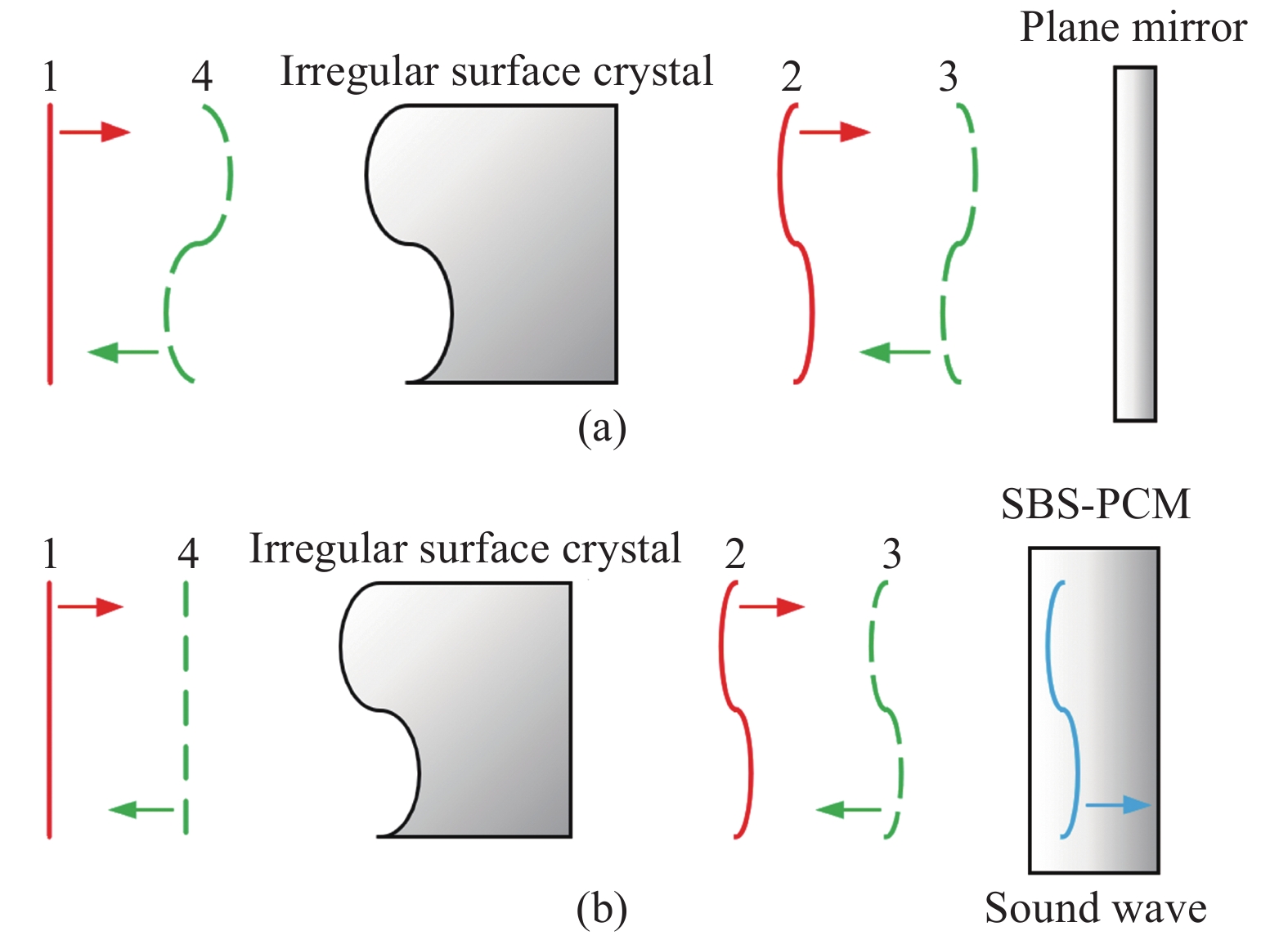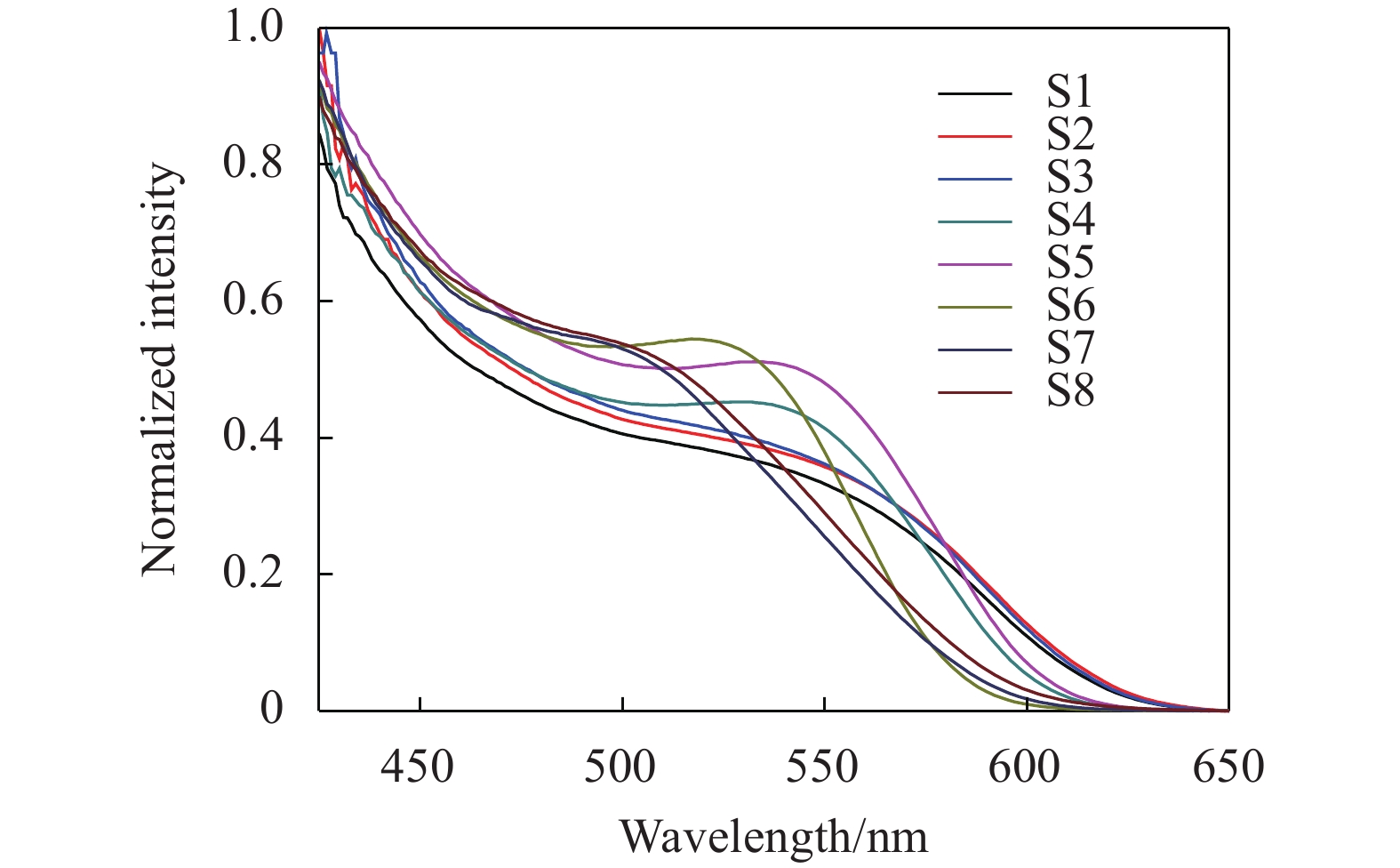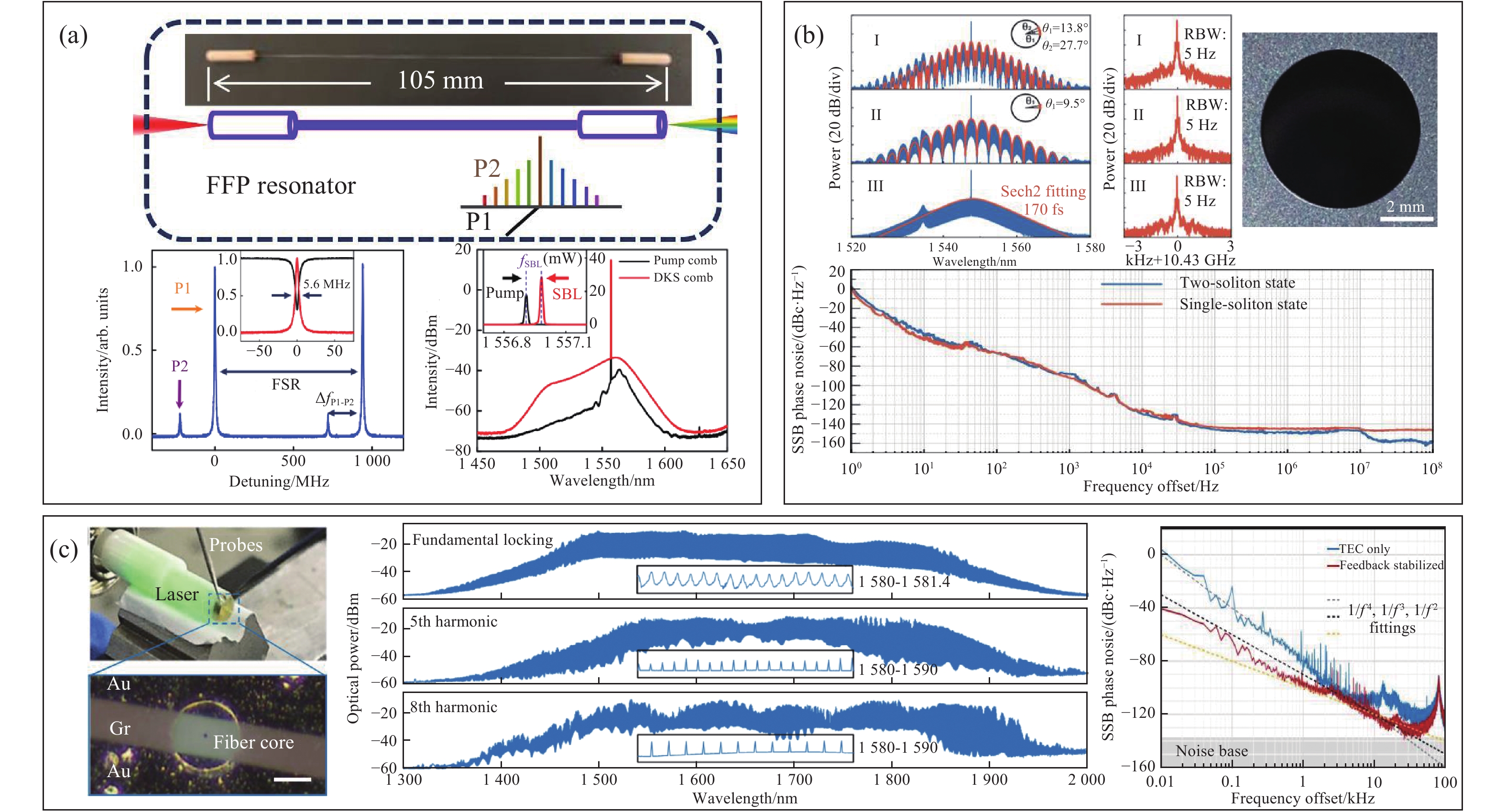2021 Vol. 50, No. 5
2021, 50(5): 20210062.
doi: 10.3788/IRLA20210062
The contradiction between the field of view (FOV) and the spatial resolution (operating range) of the thermal imaging system is difficult to solve in the conventional imaging mode. Multi-aperture imaging technology is mainly divided into low overlapping rate, high overlapping rate and moderate partial overlapping imaging mode. In this paper, a theory of partially overlapped FOV bionic thermal imaging was studied. Four sets of infrared objective lens and infrared IRFPA cores were used to form a 4-aperture distributed thermal imaging system with central variable resolution. The "union" FOV of each sub-aperture constituted a large FOV for the system, and the "intersection" FOV of each sub-aperture, especially the central overlapped FOV, had super-resolution capability, thus forming a spatially variable resolution visual mode, which could alleviate the traditional single aperture thermal imaging problem. The overlapped field of view could be used to construct 4-eye and 2-eye stereo imaging for near-field target scene. Through polarizers on the sub-apertures, the central FOV could form a fully polarized thermal imaging mode. The detectors on the diagonal with LW or MW infrared focal plane detectors respectively could form a dual-color thermal imaging mode. Theoretical analysis shows that this bionic thermal imaging system with multi-aperture distributed and partially overlapped FOV has the characteristics of bionic intelligence, which can intelligently observe the interested targets, improve the target detection and recognition capabilities in complex background conditions and has extensive application prospects.
2021, 50(5): 20200321.
doi: 10.3788/IRLA20200321
There are many gas sources in the Dewar’s vacuum insulation space, the biggest gas source is material outgassing. The problem of outgassing pollution caused by the desorption, volume diffusion, and penetration of the adsorbed gas on the inner surface of the vacuum insulated space of the refrigerated infrared focal plane detector Dewar component was focused, which affected the cool down time and restricted the service life of the infrared detector component. A passivation treatment plan for the inner surface of the infrared detector Dewar was designed, and the passivation film on the inner wall of the Dewar was prepared based on a certain type of Dewar product. The pressure rise method was used to compare the outgassing rate, and the gas composition was analyzed by a quadrupole mass spectrometer. The test results of outgassing rate show that the passivation film effectively inhibits the release of hydrogen, and the outgassing rate of Dewar is reduced by more than half. The processing method of the passivation film on the inner surface of the Dewar is simple and effective, which improves the vacuum life and has engineering promotion value.
2021, 50(5): 20200345.
doi: 10.3788/IRLA20200345
A transmission-type cryogenic optical infrared camera works in IGSO, the space thermal environment of which is complex and changeable. As a part of the cryogenic optical system, the all-optical path needs the high requirements of temperature gradient and temperature stability, which brings challenges to the design of thermal control system. The key points and difficulties in the thermal control design of camera were analyzed in detail according to the temperature requirements of the camera in orbit and the characteristics of the heat flow outside the space. The cooling process of cryogenic optical system was realized by the heat transfer of low-temperature heat pipe and the radiative cooling, and the high-precision temperature control of the cryogenic optical system was realized through the high-efficiency thermal protection, thermal isolation and indirect radiation temperature control technology. The results of thermal balance test show that the temperature of each optical component all meets the requirements, and the temperature uniformity and stability of the optical lens are high under the imaging case. The maximum temperature difference between the optical lenses is less than 1 K, and the maximum temperature fluctuation is less than ±0.3 K. High precision temperature control of optical lens in complex internal and external thermal environment is realized. In the heating decontamination case, the thermal resistance of the low-temperature heat pipe is increased at room temperature by using the characteristic of “thermal switch” for the low-temperature heat pipe, and the requirement of heating decontamination of optical lens can be realized through small control power consumption.
2021, 50(5): 20200397.
doi: 10.3788/IRLA20200397
At low temperature, the lens structure will produce thermal deformation, which will affect the modulation transfer function (MTF) and defocus of the lens, thus affecting the quality of optical imaging. Based on an infrared remote sensor, a set of transmission cryogenic lens with thermal unloading function was designed for the 210 K low-temperature working environment. The finite element model was established, and the thermal deformation data was obtained by loading the simulation of the in-orbit working environment temperature field. Finally, the variation of lens MTF and defocusing amount were calculated, and the structure of cryogenic lens was optimized through this simulation analysis method. After the installation and adjustment of the cryogenic lens, the cryogenic lens and other test equipment were placed in a vacuum tank, and MTF and the best focal plane position of the lens were tested and calibrated under ambient temperature and low temperature conditions. The test results show that the errors are within the acceptable range, the MTF variation is only 0.2%, indicating that the cryogenic lens multi-field coupling simulation method is reliable and can guide the design of cryogenic lens for infrared remote sensor.
2021, 50(5): 20200394.
doi: 10.3788/IRLA20200394
Multi-wavelength temperature measurement technology is an advanced radiation temperature measurement technology, which assumes a functional relationship between emissivity and spectrum. The measured multi-wavelength radiation signals and the function relationship between emissivity and spectral is used to obtain the true temperature and emissivity of the target. Multi-wavelength imaging temperature measurement technology detects the multi-wavelength radiation image information of the target and inversely calculates the temperature field distribution of the target. Aiming at the inadequacy of color CCD-based multi-wavelength imaging temperature measurement, such as adaptability of the nonlinear spectral emissivity model, and the narrow dynamic range of temperature measurement, and so on, a four-wavelength non-scanning imaging temperature measurement method based on non-equal ratio filter color splitting at the diaphragm was proposed. This method could effectively compress the band imaging bandwidth to form four narrow band imaging detections, and was suitable for wide dynamic range temperature field measurement of nonlinear spectral emissivity model targets. A four-wavelength imaging thermometer was developed according to the proposed temperature measurement method. The thermometer was mainly composed of a window, a neutral optical attenuator, a four-color filter, an optical objective lens, a visible/near infrared integrated sensor, a measurement control unit, and software. The real temperature distribution of the target was obtained according to the multi-wavelength warming algorithm by the thermometer software. The target high-temperature field (800-2500 ℃) was tested under laser heating conditions. The comparison between the measurement result and the thermocouple data shows that the error is less than 1%, and the method has higher accuracy and better dynamic range adaptability.
2021, 50(5): 20211027.
doi: 10.3788/IRLA20211027
With the development of nano fabrication technology, metasurfaces have shown unprecedented advantages over traditional optical designs in controlling electromagnetic waves at subwavelength scale. A dual-wavelength metasurface operating in two orthogonal polarization states based on the dielectric silicon nanopillars was proposed. The metasurface could realize anomalous reflective wavefront manipulation via the geometric phase gradient resulting from the reflection anisotropy for different incident polarizations. The proposed design also achieved positive and negative grayscale imaging arrays for dual-polarization and dual-wavelength incidence. This approach paves the way for integrated multifunctional photonic technologies based on metasurfaces.
2021, 50(5): 20200306.
doi: 10.3788/IRLA20200306
Boron transient enhanced diffusion (TED) causes reverse short channel effect, and threshold voltage (Vt) increases abnormally, which seriously affects the device performance and yield. The Vt increment is different with different channel size. To investigate channel impurity distribution and the influence of channel size on TED, Vt adjustment ion-implantation, LDD ion-implantation and carbon co-implantation experiments were performed on 40 nm CMOS process, measuring Vt with different channel size and process, and using TCAD tools for process simulation. Experiments results show that Vt rises first with channel length decreasing and then drops sharply after reaching the maximum at 0.55 μm. The Vt -L curve slope decreases when channel width decreases. Vt decreases with channel width and it is decreasing faster and faster when channel length is constant. The interstitial Si atoms are injected by LDD ion-implantation and diffuse into channel, while boron pile up at the LDD-channel boundary. However, boron leak into the shallow trench isolation (STI) area at the corner formed by LDD and channel. Both pile-up and leakage control boron concentration distribution in channel. The Vt shift induced by boron TED is channel size-dependent, and high energy carbon co-implantation and infrared rapid thermal anneal can suppress TED effect effectively.
2021, 50(5): 20200453.
doi: 10.3788/IRLA20200453
In order to improve the measurement accuracy of the three-dimensional shape of the flexible mechanism, a multi-core optical fiber three-dimensional shape reconstruction method based on curvature and angle correction was proposed. By introducing directional angle and curvature correction coefficients, the flexible three-dimensional deformation multi-core fiber reconstruction algorithm was improved; the multi-core fiber grating sensing array was fabricated by using excimer laser and phase mask method, and the multi-core fiber three-dimensional shape reconstruction experiment system was established; the shape reconstruction error under different curvature scale factors was measured in the experiment, and the shape reconstruction error before and after the curvature and angle correction was analyzed; Through the cubic spline interpolation of the strain and the correction of the direction angle and curvature, the average value of shape reconstruction error was 0.74 mm and the maximum value was 1.64 mm; By using the calibrated multi-core optical fiber sensing system to carry out the three-dimensional helix deformation reconstruction experiment, the reconstruction accuracy was improved by 10.2%. The research results show that the multi-core optical fiber 3D shape reconstruction method based on curvature and angle correction has higher accuracy, showing important application prospects and values in real-time monitoring of the 3D shape of flexible mechanisms.
2021, 50(5): 20210108.
doi: 10.3788/IRLA20210108
The influence of the nonlinear interaction between femtosecond plasmas on the ultra-high frequency electromagnetic wave—terahertz (THz) wave was mainly studied in this paper. Many research institutions had confirmed that in the process of generating THz wave, the interaction between plasmas would affect THz wave. Combined theoretical analysis, a test system for generating THz wave due to the coincidence of two-beam plasmas was designed by the author. The study found that the nonlinear interaction between plasmas will produce a third-order nonlinear optical effect. The refractive index and phase of the plasma changed to form a non-uniform field, which led to a decrease in the radiant energy of the THz wave. In the experimental measurement research, it was found that with the increase of the plasma wavelength of the double beam plasma wavelength, the plasma density increased, resulting in a more obvious decrease in the radiation energy of the THz wave. In addition, the greater the plasma power, the greater the absorption of THz wave. At the same time, it was found that the mass of inert gas molecules around the plasma affected terahertz reduction degree. The mass of gas molecules determined the intensity of the electric field formed by the plasma ionized by the femtosecond laser focusing on the air. The higher the molecular mass, the stronger the intensity of the electric field formed, and the greater the magnitude of the THz wave reduced when the two-beam plasma overlapped. The study provides more comprehensive theoretical support for influence of the nonlinear interaction between plasmas on the THz wave, which helps to promote the rapid development of THz wave technology in the military and civilian fields.
2021, 50(5): 20210202.
doi: 10.3788/IRLA20210202
Based on the self-mixing and heterodyne mixing effects of antenna-coupled AlGaN/GaN HEMT terahertz detectors, two receiving front-ends, namely homodyne receiver and heterodyne receiver, were designed and tested in 340 GHz frequency band, respectively. The equivalent noise powers of two receivers were calculated through measuring the signal-noise ratio (SNR) of the signal and the received power. The experimental result indicates that the responsivity of detectors is about 20 mA/W for homodyne receiver, the noise equivalent power is about −64.6 dBm/Hz1/2 for homodyne receiver and −114.79 dBm/Hz for heterodyne receiver, respectively. With the same carrier power and the signal bandwidth, the SNR of the heterodyne receiver is greater than that of the homodyne receiver when the local terahertz source power is greater than −7 dBm. The heterodyne receiver exhibits excellent demodulation characteristics: a local terahertz source power above 0 dBm boosts the SNR by more than 10 dB compared with the homodyne receiver.
2021, 50(5): 20200336.
doi: 10.3788/IRLA20200336
Wide-field and high-quality space camera is the future development direction of payload. Based on the alignment requirements of the wide-field space camera, an image plane measurement method combining interferometry and geometric measurement was proposed. The image plane measurement platform of the wide-field space camera was built. A laser interferometer was used to determine the focal position of each field of view and a laser tracker was used to obtain the coordinates of each focal position in this method. Finally, the image plane was drawn through coordinate conversion and fitting. Image plane measurement error could be controlled within 0.01 mm. Through this method, the image plane drawing of off-axis three-mirror reflective space camera was completed, the system was with a focal length of 1200 mm, a F-number of 2.4, a linear field of view of 10°×1°. The test image plane was compared with the ideal image plane output by the optical design software ZEMAX, the shape and position of the image plane were basically consistent, and the flatness deviation was at 0.009 mm. The test results show that the optical system is aligned in place, and it provides an important basis for the completion of the detector registration process.
2021, 50(5): 20200332.
doi: 10.3788/IRLA20200332
A novel earth observation space infrared camera has been successfully launched into orbit by a test satellite. The inclined-LEO orbit for the camera is not a sun-synchronous orbit, and thus the variation of external heat flux for the space load is extremely complicated. In order to guarantee the camera operating stably in orbit, high temperature stability for the optical system and the load-carrying construction and large power pulse tube cryocooler of low temperature infrared detector are both required. The complicated orbit heat flow and high stability thermal control indexes brought a big challenge for the thermal design. Based on the thermal control index and the space environment, the characteristic of the thermal design was analyzed and the team proposed a set of measures to meet the targets, like attitude maneuver, indirect radiant thermal control and coupled radiating surface. The thermal balance test result and in-orbit temperature data both indicated the thermal stability of the optical system was better than ±0.3 ℃ for each orbit within the temperature level of (18±2) ℃. Results shows that the thermal design is reasonable and practicable, and the space infrared camera works in good condition in orbit.
2021, 50(5): 20200322.
doi: 10.3788/IRLA20200322
Aiming at the problem of central obstruction and assembly difficulties in the reflective imaging of the airborne dual-band common-aperture photoelectric sighting system, a common-aperture optical system with front-light path refraction imaging was designed. The initial structure of the optical system was calculated using the two-component zoom theory. Based on the Minimum Resolvable Temperature Difference (MRTD) model, the operating distance of infrared system was analyzed, and the compensation residual error of forward image motion was analyzed according to Rayleigh criterion. When the airborne dual-band common-aperture photoelectric aiming optical system worked in the waveband of 0.38-0.76 μm, it can achieve 5× continuous zoom from 36 to 180 mm. When it worked in the 3-5 μm waveband, it can realize three fields of view transformations, and the ratio of the three focal lengths of the three fields is 3. The working F number was 4. The design results show that, in the working environment of −40-60 ℃, the optical system undergoes optical passive athermalization treatment, which meets the requirements of system imaging quality.
2021, 50(5): 20200303.
doi: 10.3788/IRLA20200303
The problems of the two-axis fast steering mirror based on flexible support was put forward firstly, a servo mechanism structure of the two-axis fast steering mirror based on flexible support was introduced briefly, the pulse transfer function of the servo mechanism was established, the MIMO system parameter identification theory was discussed, and the method based on COR-IV method was analyzed. Based on the method, the identification method of servo mechanism based on flexible support for the two-axis fast steering mirror was proposed and simulated. The experiment for the identification of servo mechanism parameters was designed to verify the method and the experimental results were compared with theoretical calculations. The experimental results show that the MIMO system parameter identification algorithm based on the COR-IV method is effective, the identification accuracy is within the expected range, and the identification results can provide data support for the adaptive control of fast steering mirror.
2021, 50(5): 20210007.
doi: 10.3788/IRLA20210007
Aiming at the requirements of high surface accuracy, high reliability and high stability of large aperture off-axis mirror assembly, a new type of composite support scheme for off-axis mirror was designed, which was supported by central cylinder and four points that could lock or unlock freely. The heat locking parts were locked during mechanical test and launching, released during ground test and on orbit. It could effectively improve the fundamental frequency and the ability to resist vibration, while ensuring the surface quality. In the end, the design was verified in the development of 706 mm×560 mm off-axis mirror assembly of a space remote sensor. The results show that the dynamic performance of the mirror assembly is very excellent when the four auxiliary support points is locking, that can meet the requirements of adhesive stress ≤3 MPa when the fundamental frequency is greater than 120 Hz and the static load is greater than 30 g, and the RMS of the surface of the mirror is better than λ/40 (λ=632.8 nm) when the four auxiliary support points locked or unlocked. The support design is reasonable and effective.
2021, 50(5): 20200492.
doi: 10.3788/IRLA20200492
On the basis of the theory of integral time calculation, the error sources of measuring algorithm and residual error were analyzed, and the quantitative analysis and research on the influence of residual error on imaging quality was carried out, the effectiveness of using Harris angle point algorithm to realize sub-pixel location of interframe image motion $ \Delta {{L}}$ was verified by using 50 groups of sample data through MATLAB. The strategy combining the corner threshold optimization and the prior knowledge elimination of mismatching can effectively reduce the amount of operational data, and carry out the sub-pixel location calculation for the matched angle points. The simulation results show that the calculation accuracy of $ \Delta {{L}}$ is better than 0.2 pixel, which can meet the demand of on-orbit use of the calculation method. Finally, with the application characteristics of the real-time calculation method, the imaging parameters of TDI detector high resolution remote sensing camera were proposed, which provided design reference for on-orbit use of the calculation method. Using high frequency plane array CMOS cameras to calculate integral time method can effectively solve the target elevation data is unknown cases, photography slant distance cannot be accurately obtained. Calculation method with low cost and feasibility on orbit, can compensate for the image quality degradation caused by image motion mismatch, which is beneficial to the improvement of imaging performance of TDI detector high resolution remote sensing camera.
2021, 50(5): 20200316.
doi: 10.3788/IRLA20200316
The diameter and roundness measurement of ring workpieces based on the laser displacement sensors is widely used in the measuring process of the product quality in the industrial site. The effect of angle setting errors of laser displacement sensors on the measurement of the workpiece’s diameter was studied, and the calibration method of them was proposed. Firstly, the relationship between angle setting errors of displacement sensors and calculated errors of the diameter was analyzed quantitatively. Secondly, a calibration method was proposed, which could calculate the angle setting errors of the sensors in accordance with the measurement data of three displacement sensors, and the diameter of the standard circle was unknown. The modeling process of the calibration method was illustrated and the effectiveness of the method through simulations was confirmed. Finally, the angle setting errors were calibrated by using coordinate measuring machine. The experiment result shows that the absolute errors of diameter are improved from 20 μm to 1.5 μm after calibration.
2021, 50(5): 20200315.
doi: 10.3788/IRLA20200315
In order to improve the strain transfer efficiency of the fiber Bragg grating (FBG) sensor for the deformation monitoring of the aerostat airbag skin, the strain transfer characteristics of FBG for the flexible composite skin monitoring were studied. According to the structural characteristics of the flexible composite skin material, a three-layer strain transfer model of "FBG-adhesive layer-skin structure" was established and the strain transfer function was deduced. The strain transfer at each point of the FBG sensor was carried out by analytical and finite element methods. The influence of the relevant parameters of adhesive layer and skin structure on the transmission rate was analyzed and the best packaging parameters of the surface bonded FBG sensing structure were obtained. The research results show that the calculation error of the analytical and numerical methods is less than 5% for the strain transfer efficiency in the middle of the sensor. When the elastic modulus of the adhesive layer is 0.5 GPa, the adhesive length is 40 mm, the adhesive width is 6 mm, and the thickness of the upper and lower adhesive layers are 0.2 mm and 0.1 mm respectively, the strain transfer rate of the fiber grating strain transfer model after packaging parameters optimization can reach 97.04%. It can meet the sensitivity requirements of aerostat airbag deformation monitoring.
Image sharpness evaluation function is the core of Depth from Focus (DFF) method for 3D profile measurement. Crucially, the accuracy of depth measurement is determined by the evaluation function. An image sharpness evaluation function using high-frequency component variance weighted entropy was proposed. The quantitative indicators including the resolution ratio and the sensitivity factor were used to test the proposed function and the common functions. The comparative data showed that the proposed function could achieve better focusing performance than the other functions. The focusing position in depth direction could be precisely confirmed by implementing the Gaussian fitting to the image sharpness curve calculated through the proposed function. Focusing repeatability and standard step height measurement were tested. The standard deviation of the data of the focusing repeatability experiment was 2.82 μm. And the standard deviation of the measurement height of the standard step was 12 μm. The result verifies the feasibility of the proposed method for high precision non-contact 3D measurement.
2021, 50(5): 20200313.
doi: 10.3788/IRLA20200313
Relative spectral responsivity and the in-band spectral response non-consistency of polarization remote sensors are the basic parameters for laboratory calibration. In this paper, a spectrally-resolved calibration facility was assembled for the calibration of relative spectral responsivity by using novel supercontinuum laser and monochromator. Taking three polarization channels of 490 nm, 670 nm and 910 nm as examples, the relative spectral responsivity of the channel polarization remote sensors was obtained under the two states of the monochromator output light directly and the monochromatic light steered into an integrating sphere respectively, and the polarization state of the calibrated light source was measured under the two states. The experimental results show that there are obvious changes in degree of linear polarization (DOLP) and polarization orientation angle in the mode of direct output light of monochromator, and the non-consistency of in-band spectral response of the three polarization channels were 0.91%, 4.25% and 1.06%, respectively. When the monochromatic light steered into the integrating sphere, the DOLP of the light source decreases significantly, and the non-consistency of in-band spectral response were 0.15%, 0.47% and 0.57%, respectively, which indicates that depolarized light source can be effectively applied to the spectral responsivity calibration of polarization remote sensors. And the system-level calibration facility based on supercontinuum laser and monochromator has wide application prospects in the calibration of polarization remote sensors.
2021, 50(5): 20200437.
doi: 10.3788/IRLA20200437
The phase ambiguity and unwrapping of phase-sensitive optical time domain reflectometer was investigated. The whole process of phase change introduced by the perturbation was deduced, and the reason for phase ambiguity in the phase demodulation was analyzed. The piezoelectric ceramic was used as the disturbance source, and phase demodulation was performed by digital coherent demodulation. The experimental results show that phase ambiguity exists on each phase demodulation curve and among these curves simultaneously. So it is necessary to perform two phases unwrapping to eliminate phase ambiguity. Meanwhile, the phase disorder in the experiment was analyzed. It was pointed out that the phase unwrapping threshold and the phase drastic change in the disturbance position caused the inaccurate phase unwrapping of the perturbation position. The phase change in the adjacent position following the phase difference peak was used to restore the perturbation. The experimental results show that this method can correctly restore the disturbance signal, can demodulate the disturbance signal in the range of 10 Hz-1.5 kHz accurately, can simultaneously demodulate and respond to multiple perturbations along the optical fiber and the phase change amplitude have a good linear relationship to the disturbances intensity.
2021, 50(5): 20200327.
doi: 10.3788/IRLA20200327
According to the communication requirements of Leo satellite constellation, a laser communication equipment structure based on double Risley prisms and quadrant avalanche photodiode (QAPD) was designed. The scheme was beaconless optical system. It had the characteritics of small size, low weight and large field of view. In this paper, the calculation model of input and output light of double Risley prisms structure was given. On this basis, the interstellar of pointing, capturing and tracking was proposed, then in orbit test and verification were carried out on XY-2 satellite. The pointing offset was updated, based on pointing test, the QAPD tracking point was calibrated, and the two-way link up with the XY-2 satellite test was carried out. The bidirectional chain building test which was repeated 15 times showed that the acquisition time of the laser communication equipment was less than 20 s, and the acquisition success ratio was 100%. After the acquisition, the chain building time of the two satellites was better than 2 s and the linking success ratio reached 93%, and the RMS value of tracking accuracy was less than 30 μrad.
2021, 50(5): 20200309.
doi: 10.3788/IRLA20200309
The complex bidimensional empirical mode decomposition (C-BEMD) was applied to target recognition of synthetic aperture radar (SAR) image. As an extension of traditional BEMD to complex domain, C-BEMD could directly process the complex SAR images (including the amplitude and phase information). C-BEMD was employed to decompose SAR images to obtain multi-layer bidimensional intrinsic mode functions (BIMF), which could reflect the time-frequency properties of images. These BIMFs had individual description capabilities, which reflected the target characteristics from different aspects. Also, they shared inner correlations, which were originated from the same target. The classification algorithm was developed based on the joint sparse representation, which used the inner correlations to improve the representation precision. The multi-class SAR images in the MSTAR dataset were used to test and validate the proposed method. The results confirm its reliable recognition performance under the standard operating condition (SOC) and extended operating conditions (EOC).
2021, 50(5): 20200364.
doi: 10.3788/IRLA20200364
Infrared-visible image patches matching is widely used in many applications, such as vision-based navigation and target recognition. As infrared and visible sensors have different imaging principles, it is a challenge for the infrared-visible image patches matching. The deep learning has achieved state-of-the-art performance in patch-based image matching. However, it mainly focuses on visible image patches matching, which is rarely involved in the infrared-visible image patches. An infrared-visible image patch matching network (InViNet) based on convolutional neural networks (CNNs) was proposed. It consisted of two parts: feature extraction and feature matching. It focused more on images content themselves contrast, rather than imaging differences in infrared-visible images. In feature extraction, the contrastive loss and the triplet loss function could maximize the inter-class feature distance and reduce the intra-class distance. In this way, infrared-visible image features for matching were more distinguishable. Besides, the multi-scale spatial feature could provide region and shape information of infrared-visible images. The integration of low-level features and high-level features in InViNet could enhance the feature representation and facilitate subsequent image patches matching. With the improvements above, the accuracy of InViNet increased by 9.8%, compared with the state-of-the-art image matching networks.
2021, 50(5): 20200318.
doi: 10.3788/IRLA20200318
Quickly and accurately grasping the spatial distribution of crops, estimating the area and scope of different crops were of great significance for the country to formulate macroscopic agricultural policies and guide farmers in agricultural production. To explore an efficient and accurate crop classification method, this paper took the agricultural area of Jalaid Banner of Hinggan League in Inner Mongolia Autonomous Region of China as the study area and extracted main crop classification based on the Sentinel-2 satellite remote sensing image data from May to October 2019. By analyzing the time-series curves of the four characteristic indexes of NDVI, RVI, EVI and Ref (NIR) in the study area, a total of four classification methods including Random Forest (RF), Decision Tree (DT), Support Vector Machine (SVM), and Maximum Likelihood (ML) were used to classify various crops in the study area. The RF results were compared with the classification results of DT, SVM and ML, and the spatial distribution of major crops such as rice, corn, stevia, dry rice and soybean were successfully extracted and identified. The results showed that RF had the highest overall classification accuracy of 95.8% with a Kappa coefficient of 0.944, DT, SVM and ML had classification accuracy of 92.2%, 91.6% and 86.5%, respectively. The above results indicate that the multitemporal Sentinel-2 remote sensing images can be extracted by spectral index time-varying features, and the crop classification using the random forest algorithm can obtain high accuracy results, which provides effective technical support for the fine guidance of large-scale agricultural production in the park.
2021, 50(5): 20200490.
doi: 10.3788/IRLA20200490
Iron ore is a very important mineral resource. Its development and utilization have a great impact on the development of the iron and steel industry. The selection and classification of iron ore is an indispensable link in the metallurgical industry. Different types of iron ores and its grade will directly affect the ratio of other substances, so the research on the selection and classification of iron ore is of great significance in the metallurgical industry. Laser-induced breakdown spectroscopy (LIBS) is a recently developed component detection technology. It has the advantages of non-destructive, fast, in-situ online detection, etc., and has certain advantages in the field of chemical composition detection and sample classification. In order to study the method of improving the classification accuracy of iron ores, 10 kinds of natural iron ores, including hematite, limonite, siderite, mica hematite, magnetite, maghmite, oolitic hematite, pyrite, cobalt-bearing magnetite, pyrrhotine, were classified with LIBS and machine study. In this study, 10 kinds of natural iron ores, were ablated by LIBS to obtain their corresponding spectral data; then the 10 features corresponding to the maximum spectral intensity were obtained by setting a threshold; the classification training and testing on selected feature spectra were performed with KNN, RF, and SVM models. The results show that the classification accuracy of the three machine learning models: KNN, RF and SVM are 83.0%, 80.7%, and 90.3%, respectively. It can be seen from the classification accuracy that combination of LIBS and machine learning can achieve rapid and accurate classification of iron ores, which will provide a new method for classification of iron ores in the metallurgical industry.
2021, 50(5): 20211028.
doi: 10.3788/IRLA20211028
With the help of the deep learning model applied in the inverse design of the metagrating beam splitter, good uniformity and high diffraction efficiency can be obtained. The structure design, diffraction efficiency and uniformity of the metagrating beam splitter was studied by using the global topology optimization neural networks. Under the working wavelength of 900 nm, the beam splitter with splitting angle of 120° and 150° designed based on the global topology optimization networks had high diffraction efficiencies of 95% for 120° and 85% for 150°.
2021, 50(5): 20210147.
doi: 10.3788/IRLA20210147
Laser wireless power transmission in unmanned aerial vehicle, satellite station and lunar robot power supply has potential application prospect, whose efficiency becomes the key to the application bottleneck. In order to improve the electro-optic conversion efficiency of the transmitter, the spot uniformity and the effective power ratio in window at the receiver, a design scheme of high efficiency diode laser for the transmitter of laser wireless power transmission was proposed. A high power and high efficiency diode laser system was designed, which is based on space combination with high efficiency, what’s more, the unevenness of the intensity at the receiving end can be optimized to 0.207, and the power ratio in the effective window is more than 94%. A laser wireless power transmission experimental device was built, whose power is over kilowatt, and the rectangular spot was outputted directly by diode laser system, which is matched with rectangular photovoltaic cell, thus the battery array layout rate was improved. The feature of multi-beam modulation was used to improve uniformity of the intensity, which is beneficial to improve the optic–electro conversion efficiency of battery and simplify the power management at the receiving end. The design and research provide reference for the practical application of laser wireless power transmission.
2021, 50(5): 20211024.
doi: 10.3788/IRLA20211024
Stimulated Brillouin Scattering (SBS) is a third-order nonlinear optical effect, the reflected beam of which has the property of phase conjugation. The reflected beam is time inversed on amplitude, phase and polarization with the incident beam and maintains the same wavefront as the incident light. In the Master Oscillator Power Amplifier (MOPA) nanosecond laser system, the thermal effect in the laser amplifiers and a large number of optical elements in the optical path cause serious wavefront distortion of the transmitted beam, which not only deteriorates the beam quality, but also limits the possibility of further power improvement. Stimulated Brillouin Scattering Phase Conjugate Mirror (SBS-PCM) is utilized widely in this kind of laser system for the fact that using SBS-PCM by making the beam transmit along a round trip in amplifiers which bring in serious wavefront distortion compensates the distortion in real time, therefore is capable of optimizing the beam quality and improving the output power, so as to promote the development of nanosecond laser system in the direction of both high power and high beam quality. In this paper, the basic principle and phase conjugation characteristics of SBS-PCM were briefly introduced theoretically. Then the characteristics and application scope of different SBS-PCM media were compared. The research progress by domestic and foreign institutions on SBS-PCM and the typical application and development process of SBS-PCM in high power nanosecond lasers were summarized. Finally, the development trend of SBS-PCM was prospected.
2021, 50(5): 20200310.
doi: 10.3788/IRLA20200310
Remote detection technology between air platform and underwater is a hot research issue in the marine countries. The aim of the present work is to study the laser induced acoustic (LIA) technology used for the detection from air to underwater. The experiment and simulation of LIA detection based on the mechanism of laser-induced breakdown were mainly described. Nanosecond pulse laser was used to generate acoustic wave by the photoacoustic conversion, and the hydrophone was used to receive the waves. LIA scanning data was collected to analyze the character of acoustic source underwater by using the setup above. Then 3D imaging of LIA underwater was carried out based on the time reciprocity principle. Simulations of the sound waves generation and propagate underwater was performed by finite element method. Furthermore, it is observed from the simulation that sound signal can be still obtained after it propagates 400 m, when the laser energy increases to 2.8×1010 W/cm2. The signal to noise ratio is about 11.3 dB. The simulation shows the possibility of detection by LIA underwater in hundred meters-level. The present study provides a method for the remote detection underwater across air-water media by using LIA technology.
2021, 50(5): 20200287.
doi: 10.3788/IRLA20200287
Core-shell semiconductor quantum dots materials are being investigated due to their special performance in repairing surface defects for the single quantum dots and greatly improving the optical performance of quantum dots. Instead of a traditional small flask as a reaction vessel to prepare NaHTe, the preparation of the CdTe core using a three-necked flask was achieved. 10 CdTe/CdS and CdTe/ZnS core-shell semiconductor quantum dots with different core sizes, shell thicknesses and shell materials were synthesized. The UV–visible absorption and fluorescence spectrum of 10 kinds of core-shell semiconductor quantum dots materials were measured and analyzed. The absorption spectrum of quantum dots in the UV-visible band shows that with the increase of quantum dots size, the absorption peak is red-shifted. The CdTe/CdS quantum dots differ in fluorescence lifetime and intensity due to the conversion of different core and shell sizes of quantum dots between types I and II. When the shell thickness of CdTe/ZnS increases, the shell thickness of ZnS reduces the number of dangling bonds and defect states on the core surface, which increases the probability of electron-hole pairs recombination and causes the fluorescence peak red-shift.
2021, 50(5): 20200319.
doi: 10.3788/IRLA20200319
Since the most widely used single-scattering phase function—Henyey-Greenstein scattering phase function (H-G scattering phase function) cannot reproduce the forward scattering and backscattering behavior well, a method based on the T -matrix scattering phase function was proposed to analyze and simulate the multiple scattering and echo signal of the pulse laser in the dust environments. The single-scattering properties of dust particles were calculated by the T -matrix method and a sample method was proposed to apply T -matrix scattering phase function to the Monte Carlo simulation with a random number. Furthermore, the theoretical model of the transmission and reception of a laser fuze in dust environments was built with the above sample method and semianalytic sensing geometric method of a photon. To verify the precision of the theoretical model, a dust environment laboratory was designed and built to evaluate the performance of laser fuzes in different dust environments. Therefore some experiments were completed to derive the echo amplitudes of a laser fuze in the dust environments with different dust concentrations and the results were compared with corresponding simulation results of H-G scattering phase function and T -matrix method. The simulation results show that echo powers are increased with the increase of dust concentrations and relative humidity. And the method based on T -matrix scattering phase function has a better consistency with the experiment and is more stable, especially in denser dust environments.
2021, 50(5): 20200291.
doi: 10.3788/IRLA20200291
Lidar is the most effective means for real-time environmental awareness. Based on the demand of multi-channel perception lidar with large amount of data, real-time data transmission and miniaturization, a multi-channel parallel signal acquisition and processing system was designed based on FPGA and DSP. A self-developed three-dimensional lidar was designed, including mechanical scanning, linear array detection, data acquisition and control system. The system was implemented and verified in the three-dimensional point cloud imaging experiments. In this system, FPGA was responsible for multi-channel lidar data acquisition, control and transmission. DSP was used for data calculation and uploading the point cloud data to the upper computer through the network to realize the real-time display of point cloud. The experiments of lidar show that the proposed real-time data acquisition system could meet the requirements of point cloud calculation at 2 Mpts/s, with real time data acquisition and procession at 20 fps. The rapid calculation of lidar point cloud of the environment and obstacles is realized. It can be applied to automatic driving, navigation obstacle avoidance, perimeter security and etc.
2021, 50(5): 20211025.
doi: 10.3788/IRLA20211025
With its unique time-frequency characteristics and integrated advantages, micro combs have gradually become the cornerstone of modern information system. Recently, all fiber microcavity combs made a progress. Researchers from the University of Electronic Science and Technology of China and Nanjing University realized the generation of laser, Kerr and Brillouin optical frequency combs by using ultra-high Q-value fiber Fabry Perot resonators. They demonstrate unique advantages such as low loss, dynamic tunability and ultrahigh stability, may play new potentials in timing-standard, communication, microwave and sensing applications for fiber systems.










